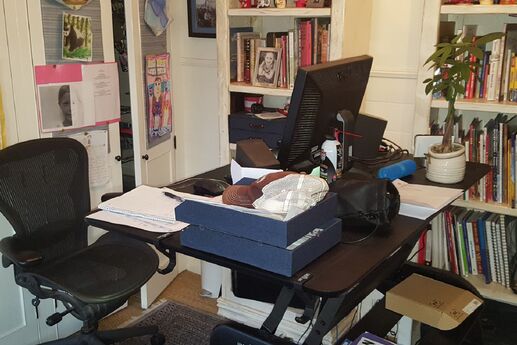
Thanks to the rapid evolution of communications and computer technology, anybody can run a highly efficient, professional operation from the comfort of their own home. Here’s an overview of everything you need to get started.
Office Furniture
Most start-up home office furniture can be purchased “pre-owned” for cheap (or free) on the internet. But the piece of office furniture you can’t skimp on is a chair. You (and your back) will be perched on it for hours at a time. An achy, fatigued person is not going to produce his or her best work. Be sure it’s ergonomic, and sit in a few different chairs before you buy. A quality office chair (like this one) can usually be purchased for around $150.
Other home office furniture essentials include:
- A lamp: Just about any lamp will do — either new or hijacked from another room in the house
- Shelves: Use them for books, manuals, good-luck charms, etc.
- Corkboard: These are great for pinning up tickets, photos, receipts and other small items
- Whiteboard: Helpful for sketching flowcharts, ideas, posting reminders, etc.
Office Technology
There are literally thousands of home office technology products. Here are the basics every home office should have:
- Wi-Fi: Wi-Fi consists of a few things these days. First, you’ll need an internet carrier if you don’t already have one. Then you’ll need a high-speed modem to control the internet signal, and a wireless router that allows you to plug several devices for a wired connection, or connect wirelessly. Most internet providers will rent you these devices for very little when they install your service.
- Laptop: Make sure you’ve got 4G of RAM, an HDMI port, Bluetooth connectivity and a reasonable hard drive of 250G or more. And be sure it has a disc drive so you can run software, burn presentations onto discs, etc.
- LCD monitor: If you have a separate desktop computer, be sure it has an HDMI port so that you can connect your laptop to it. High definition LCD or LED screens are best.
- Wireless keyboard and mouse: Allows you to have a full-size keyboard and mouse when working at home.
- Wireless inkjet printer/fax/scanner/copier: These miracle all-in-one home office devices are very reasonably priced at about $100.
- Data storage: A portable external hard drive with 2 terabytes of space costs about $100. You can also invest in a “cloud” drive, where your data is stored on a third-party server and accessed through the internet. Some cloud services offer promotions for 50 GB or more for free, but a paid account often gets you more space than you’ll ever need.
- Telecommunications: It’s not enough to say “phone” anymore — there are so many ways to make a phone call these days. A cell phone with a quality speakerphone or headset is great when starting out. There are also inexpensive VoIP (voice over internet protocol) services, which use your internet connection to make calls. And then there’s the traditional home phone service.
- Smartphones and tablets: Most mobile phones these days are “smart” in that they connect to the internet via mobile or Wi-Fi signals. They have many apps that allow you to set reminders, update your internet calendar, send email, edit documents — or even control your home security system. Tablets do most of the things a smart phone does, but on a bigger, easier-to-read scale.
